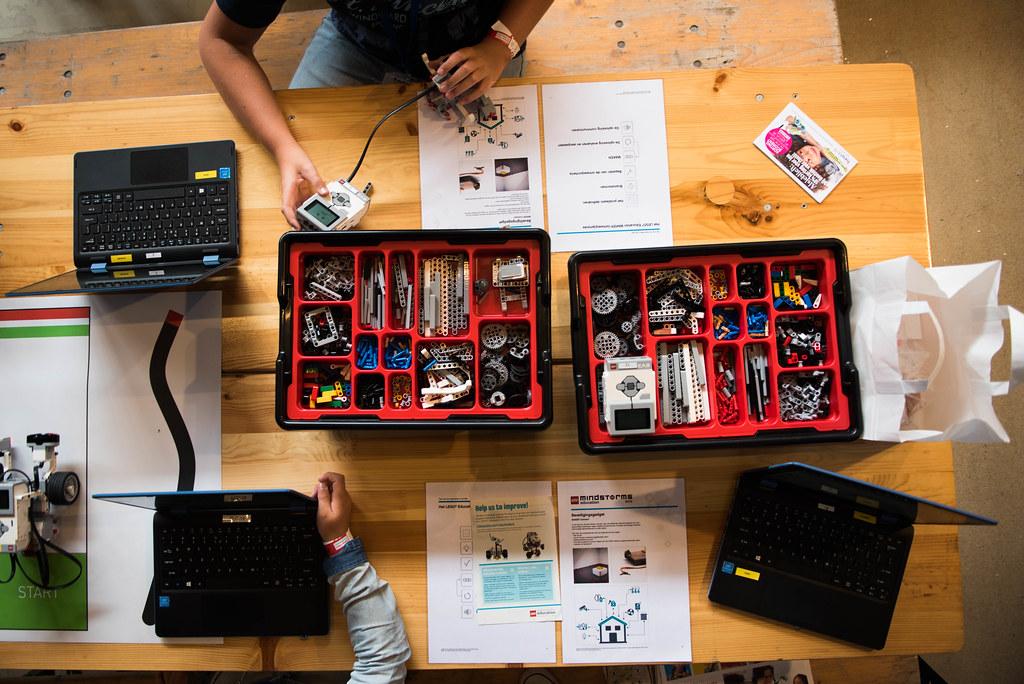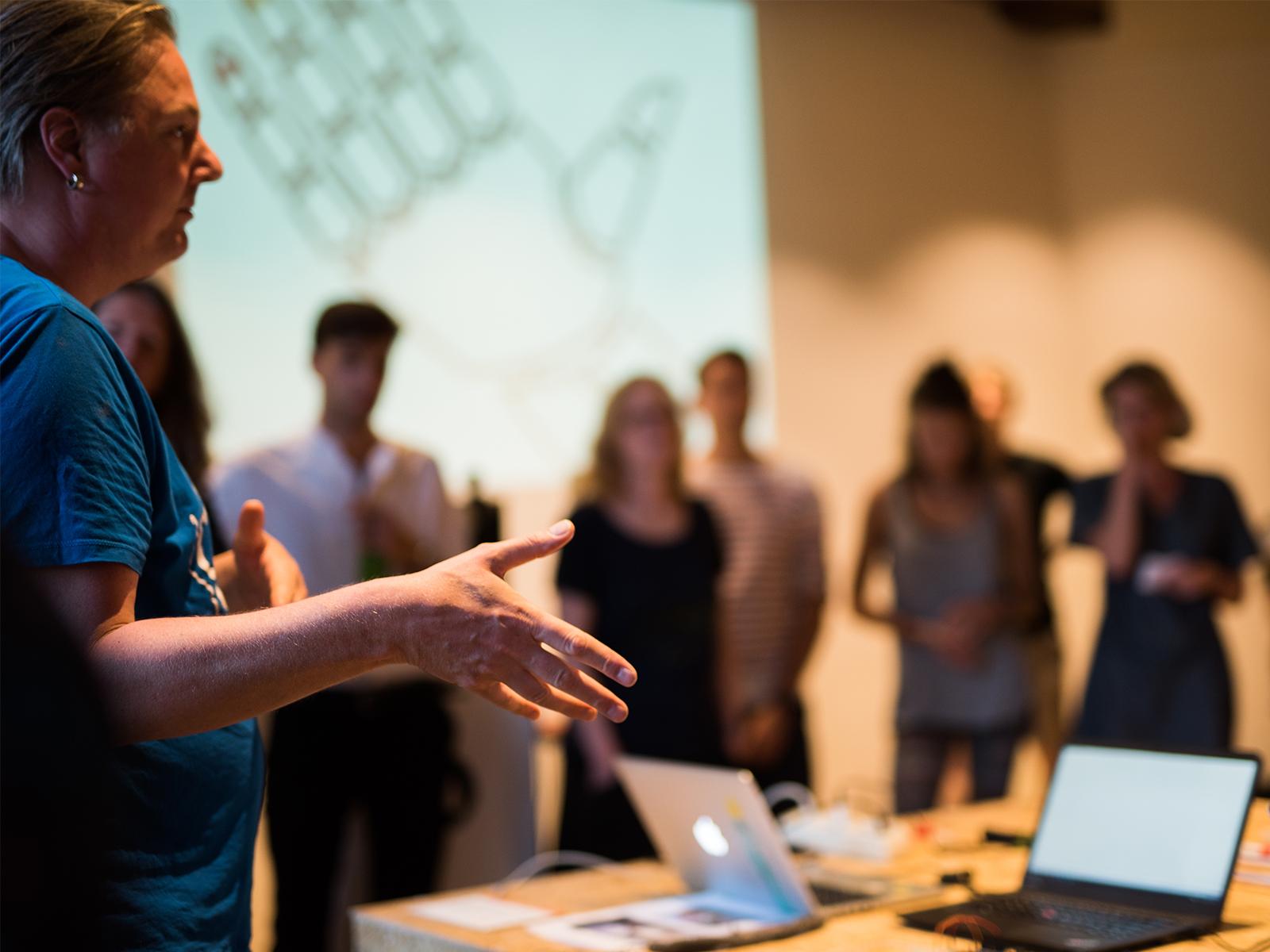A DIY-surgery robot doesn’t go without consequences. That stands to reason. But what about a seemingly simple finger splint? May that run out of control and result in do-it-yourself permanently crooked fingers or ugly skin reactions? In this blogpost I will explain the regular route to guarantee the quality and safety needed to market a medical device, and discuss it’s usability for HealthMakers.
A medical device
Imagine you are a doctor or a patient who has a great solution for a medical problem. Nowadays, makerspaces offer the opportunity to turn your idea into a tangible object. But with your solution in hands, there are still some hurdles to true innovation. Typical FabLab-products like a lamp or a phone case involve less challenges and risks than health products. Even a simple finger splint is considered a ‘medical device’. Only a ‘Class I medical device’, just as crutches, braces and wearables, but nevertheless low-risks are involved and therefore its marketing is regulated to guarantee quality and safety. More about the classification and guidance of medical devices can be found here.
The European regulation system
Healthcare products are incredibly slow to market because of the necessary certifications. If you want to market and distribute a medical device, the product needs to get CE-marked. CE marking is a mandatory conformity marking that indicates the existence of an accepted product standard and a claim that the manufacturer has tested the product to verify compliance with that standard. A firm administrative procedure must be followed to acquire certification. First, it must first be proven that the device meets the essential requirements as stated in the European Medical Device Directive. Second, the manufacturing process must meet the standardization rules for its specific product group. Documentation of the aforementioned must be approved by a thereby authorized representative, called the Notified Body. Luckily, a Class I product is exempted from this ‘notification’, and may be provided with a CE-mark based on documentation justified by the manufacturer itself. When products with CE-marks like these are assigned, regular audits have to be executed to check whether the requirements for the quality control system are met. This complex web of regulations poses quite a challenge, to say the least.
The need for a new system
As makers find it difficult to find their way in the maze of regulations, many possibly good products are failing to make it to the market. Obviously, the current regulation and control system is designed for mass production and is less suitable for modern, more innovative ways of personal and local fabrication. The new manufacturing landscape could not look more different from the old ideal image of uniform mass production: nowadays, just anyone who has access to a 3D printer can become a ’manufacturer’ and personalize a design himself to make the product meets his personal needs and wants. As this futuristic landscape is becoming reality, the regulation system should evolve likewise. Right
However, surprisingly, the lack of evolution in the regulation system is not (yet) limiting innovative makers from designing. Because in the context of open design and DIY, official approval is not required. As long as you bypass the market and make or re-make something for your own use, then anything is suddenly possible. Is this absence or delay of regulation perhaps a blessing for innovation? We could, or even should, ask ourselves íf we need the official regulation system to guarantee quality and safety.
Booby trap
Regulation systems do not always guarantee safety, as was demonstrated in the project 'mandarin net'. The investigative journalists of Radar, a Dutch TV-show that represents the interests of consumers, worked for nine months on a major project to expose the system behind admission of medical products to the European market. The result of their project was incredible; they actually managed to get a net package for mandarins approved as an implantable medical device. Therewith, they affectively demonstrated that that regulation systems do involve a lot of paperwork, but do not reliably guarantee safety.
Do-It-Yourself regulation
Since regulation does not guarantee safety, but does involve paperwork that is likely to be too time consuming for innovative, solely operating designers, we might not want old-fashioned regulation to evolve into the DIY designing landscape. Then, good designs might not meet their grateful future users. But, as a HealthMaker, you do want to prevent yourself from getting electrocuted by your wearable, or break through your crutch because of a design- or production imperfection. Official regulation might be too much, but there is a certain need for safety, even for Class I devices. Could the new design landscape regulate itself? Self-regulation would match the good faith spirit of this new, open source designing landscape, of both its makers and its users. Unfortunately, evaluation criteria of the standardization rules for medical devises are not open-source. How could the new industry create an ‘open’ regulation system that would guarantee safety and quality for HealthMakers without limiting individual designers? That will take some time to initiate.
Until that time, we should ask ourselves what we as makers can do to minimize the risks and overcome challenges. One smart move is to perform a risk assessment to identify possible hazards and eliminate the risks. Four important steps, inspired by the earlier mentioned essential requirements, have to be applied to perform this assessment:
- Identify known or foreseeable hazards and estimate the associated risks arising from the intended use and foreseeable misuse
- Try to eliminate these risks as far as reasonable in your design and manufacturing process
- Reduce the remaining risks as far as reasonable by taking adequate protection measures
- Inform re-makers of any residual risks
What if you’re too unexperienced, or if your techniques are too limited to perform these steps? Regulation or not, in the end guaranteeing quality and safety of your healthcare solution is what matters. And unavoidably, due to the likely technological limitations and a lack of knowledge and expertise of a substantial part of the makers, DIY-healthcare implies a risk which could result in a medical failure. Therefore, co-creation in association with engineers and medical experts is highly recommended, and the involvement of a physician in the rehabilitation process may not be underestimated.
But is the physician really open for that patient saying: “Listen, I have started designing a better finger splint. Can you help me to create the best solution for me?” Through such questions it looks like the medical professional is asked to become a bit of a medical device consultant. Let’s think of novel ways to involve different stakeholders in the HealthMaking process. Let’s think of ways to stimulate partnership, discussion and debate. I strongly believe that a door towards other models for production of medical devices has been unlocked by the DIY culture and the maker movement. Now that this door is unlocked, the next step is to further explore how to open it together.


